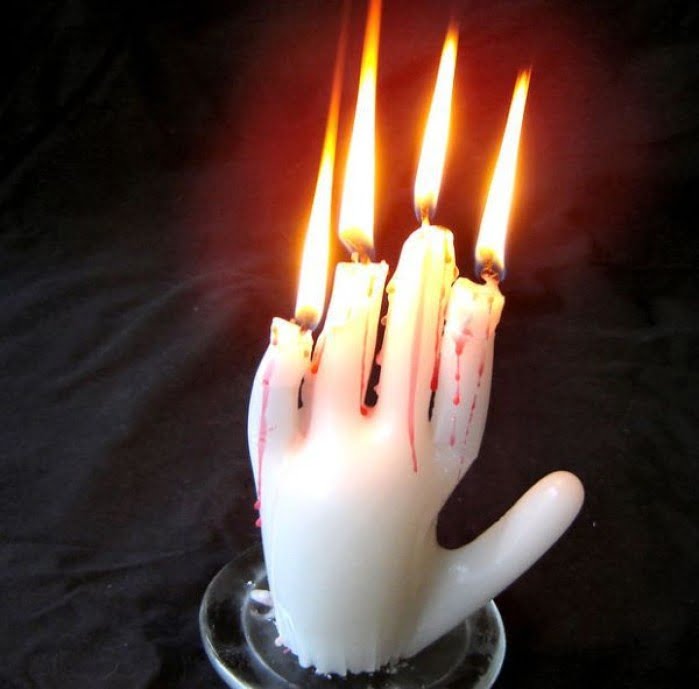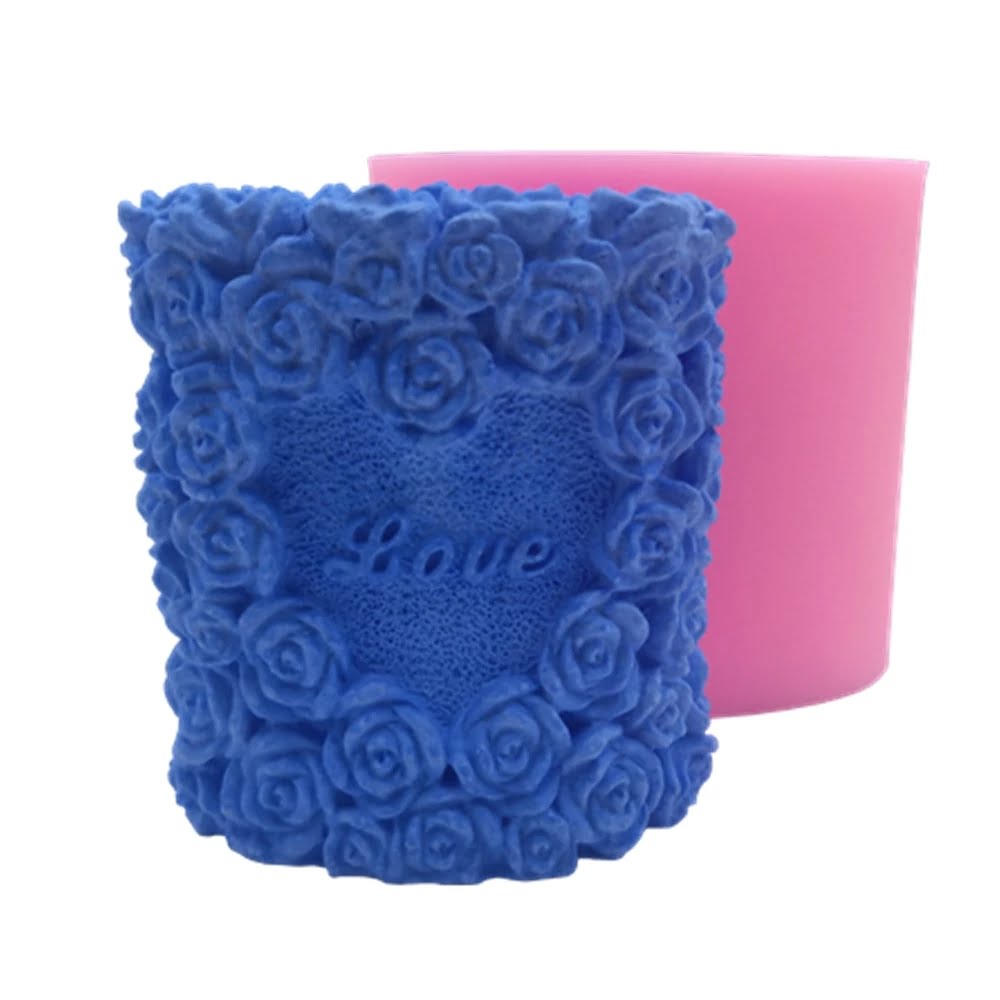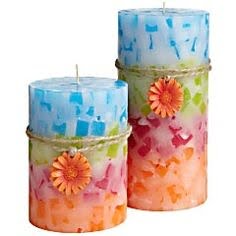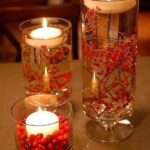In the world of candle making, one key factor that can make or break a candle’s overall quality is its hot throw. Hot throw refers to the strength and intensity of a candle’s fragrance when it is burning, and it plays a significant role in customer satisfaction.
Whether you are an experienced candle maker or just starting out, understanding and achieving a strong hot throw is essential for creating high-quality candles that fill a room with captivating scents.
When it comes to hot throw, there is more to consider than simply choosing a fragrant oil. It encompasses various elements that come together to create a memorable scent experience. The temperature at which the wax burns, the type of wax used, the quality of fragrance oil, and even the selection of wick all influence the hot throw of a candle.
Having a strong hot throw enhances both the performance and enjoyment of scented candles. Imagine lighting up a beautifully crafted candle only to find that its scent barely fills the air. This can be disappointing for customers who are seeking an immersive aroma experience in their homes or as gifts for loved ones.
In this article, we will delve into the importance of hot throw in candle making, exploring how it affects scent performance and customer satisfaction. We will also discuss the factors that influence hot throw, such as temperature, wax type, fragrance oil quality, and wick selection. Additionally, we will provide practical tips and techniques to enhance hot throw in your homemade candles. By understanding and implementing these strategies, you can create exceptional candles that delight your customers with their captivating scents.
Factors Influencing Hot Throw in Candle Making
Hot throw refers to the strength and intensity of a candle’s scent when it is burning. It is an essential factor to consider in candle making as it directly affects the customer’s experience and satisfaction. Several key elements influence the hot throw of candles, including temperature, wax type, fragrance oil quality, and wick selection.
Temperature
The temperature at which you pour your candle plays a crucial role in its hot throw. A high pouring temperature allows for better dispersion of fragrance oils throughout the wax, resulting in a stronger and more noticeable scent when the candle is lit. It is important to note that pouring wax at too low of a temperature can lead to poor distribution of fragrance oils, resulting in a weak hot throw.
Wax Type
The type of wax used in candle making greatly impacts the hot throw. Different waxes have varying abilities to hold and release fragrance oils into the air while being burned. For example, soy wax is known for its excellent scent throw because it has a lower melting point compared to other waxes, allowing for better diffusion of fragrances. Beeswax also produces a strong hot throw due to its ability to release fragrances slowly and consistently.
Fragrance Oil Quality
The quality of fragrance oils used in candles significantly influences their hot throw. High-quality fragrance oils are specifically formulated for candle making and contain higher concentrations of aromatic ingredients that provide exceptional scent performance when burned. Using low-quality or diluted fragrance oils can result in a weaker hot throw or even cause unwanted scent variations.
Wick Selection
Selecting the right wick is crucial for achieving optimal hot throw. The size, material, and design of the wick determine how efficiently it burns through the wax and disperses fragrance into the air.
Choosing a wick that is too small may result in poor scent throw, while a wick that is too large can create excessive heat and consume the fragrance oil too quickly. It is important to consider the diameter of your candle container and the desired burn rate when selecting the appropriate wick for maximum fragrance dispersion.
Understanding Fragrance Oil in Hot Throw
Fragrance oils play a crucial role in enhancing the hot throw of candles. When it comes to creating high-quality candles with a strong scent, the choice of fragrance oil is of utmost importance. Understanding the characteristics and properties of fragrance oils can help candle makers achieve optimal hot throw performance.
Difference Between Fragrance Oils and Essential Oils
It is important to distinguish between fragrance oils and essential oils when discussing their impact on hot throw. Fragrance oils are synthetic compounds specifically formulated to provide a strong, lasting scent. They are created through a combination of natural and artificial aromatic elements. On the other hand, essential oils are extracted directly from plants and retain their natural scents, which may vary in strength and longevity.
While both fragrance oils and essential oils can be used in candle making, fragrance oils are generally preferred for their ability to provide a consistent and intense hot throw. This is because fragrance oils are specially designed to disperse well in wax, ensuring a strong scent throughout the burning process.
Selecting Quality Fragrance Oils for Enhanced Hot Throw
When selecting fragrance oils for your candles, it is important to choose high-quality options that will enhance the hot throw. Here are some factors to consider:
- Concentration: Look for fragrance oils with higher concentration levels as they tend to have better scent performance. The concentration level is usually indicated as a percentage and represents the amount of oil present in the total formula.
- Flash Point: The flash point refers to the temperature at which the fragrance oil emits vapors that can be ignited by an open flame or spark. It is important to choose fragrance oils with an appropriate flash point for candle making to ensure safety during use.
- Compatibility: Ensure that the fragrance oil you select is compatible with the wax you are using. Some fragrances may not bond well with certain wax types, leading to poor hot throw performance. It is recommended to test small batches before committing to a large production.
By carefully choosing fragrance oils that are suitable for candle making and understanding their properties, candle makers can significantly enhance the hot throw of their candles and create a more satisfying experience for customers.
Choosing the Right Wax for Optimal Hot Throw
When it comes to achieving a strong and long-lasting hot throw in candle making, choosing the right wax is crucial. Different types of waxes have varying hot throw capabilities, so it’s important to consider their qualities before deciding on one. Let’s explore the various wax options available and factors to consider when selecting wax for optimal hot throw.
One popular type of wax used in candle making is soy wax. Soy wax is known for its excellent scent retention and clean burning properties, which contribute to a strong hot throw. It has a lower melting point compared to other waxes, allowing for better fragrance dispersion and an enhanced hot throw experience.
Beeswax is another natural option that can provide a good hot throw in candles. Beeswax has a unique ability to purify the air when burned, creating a pleasant environment while releasing its subtle honey-like aroma. However, beeswax can be more expensive and harder to work with compared to other waxes.
Paraffin wax is widely used in commercial candle production due to its affordability and excellent scent release. It has a high melting point and can hold large amounts of fragrance oil, resulting in a powerful hot throw. However, paraffin wax is derived from petroleum, leading some candle makers to prefer natural alternatives.
In addition to these traditional wax types, there are also blended waxes available that combine different materials for specific qualities. For example, a soy-paraffin blend may provide the benefits of both waxes – the clean burn of soy with the strong scent release of paraffin.
When selecting the right wax for optimal hot throw, factors such as fragrance load capacity, burn time, and personal preferences should be taken into account. Conducting small test batches with different waxes can help determine which one provides the desired hot throw strength and overall performance.
| Wax Type | Hot Throw Capability |
|---|---|
| Soy Wax | Excellent scent retention and clean burning properties result in a strong hot throw. |
| Beeswax | Purifies the air while releasing its subtle honey-like aroma for a good hot throw. |
| Paraffin Wax | Affordable and offers excellent scent release for a powerful hot throw. |
| Blended Waxes | Combines qualities of different waxes for specific hot throw preferences. |
Wick Selection and Hot Throw Performance
The hot throw performance of a candle is greatly influenced by the selection of the wick. The size, material, and design of the wick can all impact how well the fragrance is dispersed throughout the room when the candle is burned.
Firstly, the size of the wick plays a crucial role in determining the hot throw. A wick that is too small may not create a large enough flame to properly heat and disperse the fragrance oils, resulting in a weak scent throw. On the other hand, a wick that is too large may create a larger flame that burns through the wax too quickly, reducing the overall burn time and potentially causing soot or smoke.
Secondly, different materials used in wicks can affect their hot throw performance. Cotton wicks are one of the most common choices for candle makers due to their consistent burning properties and good scent throw capabilities. However, some natural fibers like hemp or wooden wicks can provide unique aroma experiences with varying degrees of hot throw.
Lastly, it’s important to consider the design and structure of the wick when selecting it for optimal hot throw. Some wicks are braided or have additional coatings to enhance their performance. These modifications can affect how efficiently and evenly they burn, which in turn impacts fragrance dispersion.
When choosing a wick for your candles, it’s essential to consider factors such as jar diameter, desired burn time, and type of wax being used. Experimentation with different wick sizes and types may be necessary to find the perfect match for achieving an optimal hot throw.
| Wick Selection | Hot Throw Performance |
|---|---|
| Size | Determines if flame is able to properly heat and disperse fragrance oils |
| Material | Cotton wicks provide consistent burning and good scent throw, while natural fibers like hemp or wood can offer unique aroma experiences |
| Design and Structure | Braided or coated wicks can enhance performance and affect burn efficiency and fragrance dispersion |
Tips and Techniques for Enhancing Hot Throw in Candle Making
Candle making is not just about creating beautiful candles, but also about ensuring a high-quality and long-lasting scent experience for customers. One crucial aspect that contributes to the overall candle performance is the hot throw. The hot throw refers to the strength and intensity of the fragrance when the candle is lit and the wax is melted.
To enhance the hot throw in candle making, there are several tips and techniques you can employ. First, it is vital to measure the fragrance oil accurately. Too little fragrance oil may result in a weak scent, while too much can lead to poor combustion and soot buildup. Be sure to follow recommended guidelines for fragrance oil measurement provided by reputable suppliers.
Another technique that can greatly impact hot throw is allowing for proper curing time. Curing refers to the process of letting the candles sit for a certain period after they have been poured and cooled. This allows the fragrance to fully blend with the wax and develop its maximum scent potential. Generally, it is recommended to let candles cure for at least 48 hours before lighting them.
The choice of container can also affect hot throw. Opting for containers that have a wider opening at the top will allow better fragrance dispersion as more of the melted wax surface area is exposed. Additionally, using containers made of materials such as glass or tin can help retain heat better, leading to improved scent release.
Lastly, proper candle care plays a significant role in enhancing hot throw. Trimming the wick regularly before each use helps maintain an even burn and prevents excessive flickering or smoking that could compromise scent diffusion. It is also essential to burn candles long enough during each use so that a complete melt pool forms across the entire diameter of the container, ensuring efficient fragrance release.
By employing these tips and techniques, you can significantly enhance hot throw and create candles that provide an exceptional fragrance experience for your customers. Experimenting with different combinations of fragrance oils, waxes, wicks, and containers can also help you find the perfect formula for achieving outstanding hot throw in your candle making journey.
Testing and Evaluating Hot Throw in Candle Making
In order to ensure that your candles have a strong, long-lasting scent, it is important to test and evaluate the hot throw. Hot throw refers to the strength of the fragrance when the candle is lit and can greatly impact customer satisfaction. Here are some methods for testing and evaluating the hot throw of your candles:
- Blind Smell Tests: One way to evaluate the hot throw of your candles is by conducting blind smell tests. Remove any labels or markings from your candles and light them in a controlled environment. Ask participants to rate the strength of the fragrance on a scale from 1 to 10 without knowing which candle they are smelling. This unbiased approach can provide valuable feedback on the hot throw performance of your candles.
- Customer Feedback: Another method for evaluating hot throw is by soliciting feedback from customers who have purchased and used your candles. Create a survey or feedback form where customers can rate the strength and duration of the scent. You can also ask them specific questions about their experience with the hot throw, such as whether they noticed any variations in scent strength throughout burning.
- Time and Distance Tests: To determine how far away the scent reaches when your candle is burning, conduct time and distance tests. Light a candle in a closed room and measure how long it takes for someone standing at various distances (e.g., 1 foot, 3 feet, 5 feet) to detect the fragrance. This test can help you assess how well your candle’s scent disperses in different environments.
- Longevity Tests: It is also important to evaluate how long your candle’s scent lingers in a room after it has been extinguished. After burning a candle for a certain amount of time, record how long its fragrance remains noticeable in the air. This will give you an idea of how long-lasting the hot throw is for each particular batch or fragrance.
By regularly testing and evaluating the hot throw of your candles, you can make adjustments to your candle making process or fragrance selection to achieve an outstanding hot throw. This will ultimately lead to higher customer satisfaction and repeat purchases.
Troubleshooting Common Hot Throw Issues in Candle Making
When it comes to creating high-quality candles with a strong hot throw, candle makers may encounter various issues that can negatively impact the scent performance. Troubleshooting these common hot throw issues is crucial to ensure that your candles provide a satisfying fragrance experience for customers. Here are some troubleshooting tips to help you overcome these challenges:
- Fragrance Evaporation: One of the most common issues that can affect hot throw is fragrance evaporation. If you notice that the scent seems to fade quickly or dissipate during the burning process, it could be due to the fragrance oil evaporating too quickly.
To prevent this issue, make sure you are using a compatible fragrance oil for candle making and not overloading your candles with too much oil. Additionally, consider using a lower melting point wax, such as soy wax, as it tends to hold fragrances better. - Poor Fragrance Oil Compatibility: Sometimes, certain fragrance oils may not perform well in a particular type of wax or at a specific temperature. Therefore, it is essential to test different combinations of fragrance oils and waxes to find the perfect match for optimal hot throw. If you find that a specific fragrance oil consistently produces weak hot throw results, consider trying another oil or adjusting your pouring temperature.
- Incorrect Wick Trimming: The size and maintenance of your wick play a significant role in determining hot throw performance. If your candle has a weak scent when lit, it could be because your wick is either too long or too short. A wick that is too long may result in incomplete combustion, leading to poor scent dispersion.
On the other hand, a wick that is too short may not generate enough heat to melt the wax fully and release the fragrance efficiently. Regularly trim your wicks before each burn session according to the manufacturer’s recommendations.
By addressing these common hot throw issues through proper troubleshooting techniques, you can enhance the fragrance performance of your candles and deliver a delightful scent experience to your customers. Experimentation and attention to detail are key in achieving outstanding hot throw in your candle making journey.
Conclusion
In conclusion, achieving an outstanding hot throw in your candle making journey is crucial for creating high-quality candles that leave a lasting impression on customers. The hot throw of a candle refers to the strength and diffusion of its scent when lit, and it plays a significant role in enhancing the overall fragrance experience.
By understanding the factors that influence hot throw, such as temperature, wax type, fragrance oil quality, and wick selection, you can take steps to optimize the scent performance of your candles.
One key factor in maximizing hot throw is the use of high-quality fragrance oils. Fragrance oils are specially formulated to enhance the scent release when heated, unlike essential oils which may not provide as strong a hot throw. Additionally, selecting the right wax is essential for achieving optimal hot throw capabilities.
Different wax types, such as soy, beeswax, and paraffin, offer varying levels of hot throw strength. By considering factors such as burn temperature and compatibility with fragrance oils, you can choose the most suitable wax for your desired hot throw.
Furthermore, wick selection is another crucial aspect to consider when aiming for exceptional hot throw performance. The size, material, and design of the wick all affect how evenly and efficiently the fragrance is dispersed throughout the candle. Selecting the appropriate wick based on your container size and desired fragrance intensity will help ensure a consistent and satisfying hot throw.
In order to improve your candle making techniques and achieve outstanding hot throw results, it is important to implement various tips and techniques. These include measuring fragrance oil properly, allowing sufficient curing time for maximum scent dispersion, choosing appropriate containers for optimal heat distribution, and practicing proper candle care during burning. Regularly testing and evaluating your candles’ hot throw strength through blind smell tests and customer feedback will also help you identify areas for improvement.
By focusing on enhancing your understanding of hot throw and implementing these strategies in your candle making process, you can elevate your creations to new heights. The satisfaction of knowing that your candles emit a strong, captivating fragrance that fills the room will not only delight your customers but also provide you with a sense of accomplishment in your candle making journey.
Frequently Asked Questions
Why does my candle have no hot throw?
There are several potential reasons why a candle may have no hot throw, referring to the lack of fragrance when the candle is burning. One possible cause could be an insufficient amount of fragrance oil within the candle wax. The ideal fragrance load for a candle can vary based on factors such as the type of wax and desired scent strength, so it’s essential to follow recommended guidelines provided by the supplier. Another reason for a weak hot throw might be related to the quality or type of fragrance oil used.
Some fragrances perform differently in candles, with certain oils being more suitable for providing a strong scent when lit. Additionally, factors such as wick size and type, container size, and burn time can also influence the hot throw of a candle. It’s important to experiment with different variables and techniques to determine what works best for achieving a satisfying hot throw.
Which wax gives the best hot throw?
When it comes to determining which wax gives the best hot throw, there isn’t a one-size-fits-all answer since different waxes have their own characteristics and performance qualities. However, soy wax is known for its excellent hot throw capabilities among natural waxes commonly used in candle making. Soy wax has the ability to hold high amounts of fragrance oil while still releasing pleasant scents when burned.
Its lower melting point allows for better fragrance dispersal throughout the melt pool while providing longer burn times compared to some other waxes. That being said, paraffin waxes are often associated with stronger scent throws due to their ability to bind well with fragrances and release them effectively into the air when burned.
What is the difference between hot throw and cold throw candles?
Hot throw and cold throw refer to different aspects of how candles release their fragrance profile. Hot throw pertains specifically to how strong or noticeable the scent is when the candle is burning and emanating heat from its flame or melted wax pool. This is when you experience the full intensity of the fragrance in action as it fills your space with its aroma. On the other hand, cold throw refers to the scent given off by a candle when it is not burning or has not been lit yet.
When unlit, you can still get a sense of the fragrance by simply smelling the wax itself or being near the candle. Cold throw allows you to detect the aroma before igniting the wick, giving you an idea of how the candle will smell when lit. Both aspects are important for creating an overall enjoyable and aromatic experience with candles.

Welcome to my candle making blog! In this blog, I will be sharing my tips and tricks for making candles. I will also be sharing some of my favorite recipes.





